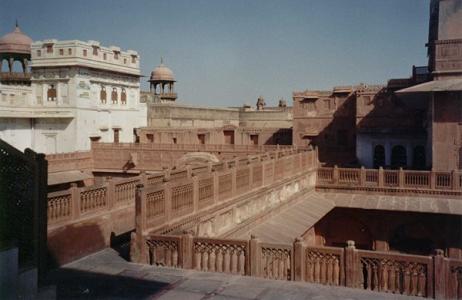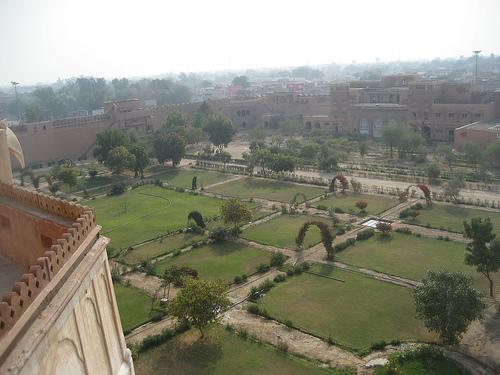
History of bikaner A Rajput prince Rao Bika ji a descendent of the founder of Jodhpur (1459 AD) , Rao Jodha Ji established his kingdom here. Bika Ji chose a barren land called 'Jungladesh' and shaped it into an impressive city, called bikaner after the founder's name. The history of bikaner dates back to the late 15th century when enraged and provoked by his father, Rao Bikaji quit the palace in Marwar and established the kingdom of bikaner in the midst of the desert surroundings. The prince fortified his kingdom in the year 1488. Since then, the city and the region has grown to be one of the reputed and richest kingdoms in the state of Rajasthan. Remains of the original small fortress Rao Bika built can still be seen around the walled city, near Lakshminath ji temple. The royal family of bikaner lived there, till Raja Rai Singh Ji built a new fort called 'Chintamani' now Junagarh , between 1589 to 1593 AD. In the 16th century the maharajas of bikaner came into conflict with the Mughal emprors in Delhi, who were in the process of setting up their new empire in Hindustan. Being located closer to Delhi, bikaner spent much more time fighting the Mughals than other desert kingdoms, such as Jaisalmer or Jodhpur. With the harsh desert terrain on their side,the bikaner armies soundly defeated the Mughals in their early encounters.By the late 16th century,however,they had won over by the diplomacy of Empror Akbar. As a result ,several of bikaner's rulers commanded the Mughal armies,fighting with distinction from Gujarat in the west to the Deccan in the south. One great ruler ,Raja Prithviraj Singh, a poet and a warrior, in fact became one of the "Nine Gems " of Akbar's court. bikaner, meanwhile, had had become a flourishing town and an important trading post along the centuries-old caravan trails that connected India with the Middle East and China. As the town prospered it became known , it became known for the handwork of its gold and silversmiths, weavers and perfumaries and leather craftsmen. It also became known as an important center for the arts and music . It was especially well known for its of miniature paintings, which were a delicate fusion of the Rajput and the Mughal style.  In the modern period bikaner produced the most outstanding Ruler, namely Maharaja Ganga Singh who ruled for 56 years. He was a strong and able ruler who renovated the traditional administration, modernized the army, separated the judiciary from the executive, constructed the famous "Gang Canal" and provided a number of welfare schemes, hospitals. His son and successor Maharaja Sardul Singh, who ascended the throne in A.D. 1943, played a conspicuous role in the merger of the princely states in the Indian Union. His Nationalistic outlook shall ever be remembered by the citizens of bikaner. His son Dr. Karni Singh made a mark in Indian politics and in the field of sports. Ever since 1952 General Elections he had been elected as member of Parliament continuously for five terms. He attained international fame in shooting arena. At present the city is developing fast into an industrial and tourism center. It was the prophecy of Karni Mata who is believed to have foretold a lot about bikaner. The Goddess prophesied the establishment of the kingdom founded by Rao Bikaji. The forthcoming kingdom was destined to be greater than that of his father Rao Jodhaji who was the founder of the kingdom of Jodhpur. Rao Bikaji, who was the descendant of the Rathore clan of the Rajputs, left his father's kingdom with a small contingent of 100 cavalrymen and 500 soldiers. The strategic location of the kingdom on the routes of the caravans brought great prosperity to the trading community of the kingdom. |

